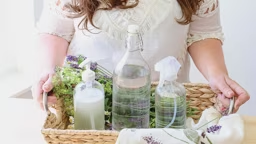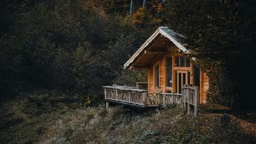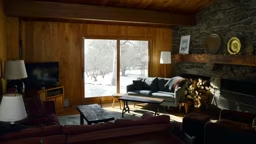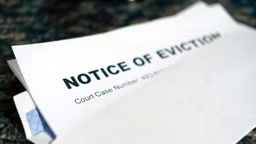
Nothing quite beats cabin life. The homey, rustic aesthetic, the isolation from the bustle of the city and the greater sense of connection to the natural world all combine to make an experience like no other. Whether you live in a cabin full-time or use your cabin as a spot to get away, you no doubt enjoy the ability to bask in the tranquility of the great outdoors with all the creature comforts of home at your fingertips.
Maintaining that environment, as any good cabin owner knows, takes work; work that might be about to get just a bit harder. With climate change on the rise and weather patterns more likely to fluctuate, cabin owners may find it harder than ever to keep mold and mildew out of their rustic sanctuaries. Mold and mildew are silent menaces, intruding unseen onto your property; and if left untreated, they can cause severe property damage and health concerns.
In this article, we’ll show you how to insulate your cabin from mold and mildew growth, showing you how to prevent water intrusion throughout the home, how to enhance your ventilation to avoid humidity and how to maintain a dry environment year-round.
Preventing Water Intrusion
You’re probably already schooled on best practices for storm protection. Measures like covering your windows, trimming trees that surround your property and reinforcing your doors are standard, especially if you live in an area where extreme weather events occur frequently. But with log cabins, leaks may spring through gaps in your property as logs expand and contract – no extreme weather required.
Small leaks can do just as much damage as flooding. Especially as climate change continues to affect weather patterns, understanding how to prevent any kind of water from entering your home – whether it’s a light rain or a literal hurricane – will prevent all the ugliness that comes with severe water damage.
To prevent water damage from leaks and floods, try:
-
Frequently checking your property for signs of water leakage: Water will announce itself after it enters your home. Discolorations or stains on carpets and walls, unaccountable pooling water on floors and musty odors with no apparent cause are all signs you have a leak. If any of these signs crop up, dispose of the affected materials as quickly as possible to stem any potential mold or mildew growth.
-
Investing in caulk: Once the leak is detected, seal it with caulk. Caulk is a sealant often found at your local department store and has a variety of types that are suited to different properties and cracks. You can use this resilient adhesive to bridge cracks, efficiently and inexpensively patching leaks before they cause further property damage.
-
Waterproofing windows and doors: Weather strips are less permanent than caulk, but just as effective at keeping water out of your home. Weather strips are used to reinforce and seal gaps in windows and doors, and there are a variety of versatile options on the market to cover every aesthetic, budget and gap size.
It also helps to have a contingency plan in the event of flooding or water damage. Conduct some research on contractors in your area: if signs of a leak begin to crop up and you can’t identify the source, you want someone you can trust to audit your property and advise you on the next best steps.
Maintaining a Dry Living Environment
An unfortunate side effect of choosing the cabin life is that you might have to deal with air leakage. As the moisture in the logs comprising your home responds to the environment, expanding and contracting over time, you may find that your utility bills go up – meaning your home may have an unseen and unknown air leak. Log homes are typically energy-efficient, but are also prone to this phenomenon, with possible causes including age, gaps in the chinking or improperly sealed windows and doors.
While this is a problem, it can also lead to accumulated humidity inside your cabin, causing mold and mildew growth if left untreated. If you don’t have systems in place that detect abnormal accumulations of moisture, mold may gain purchase in your property without your awareness. Investing in sensors that detect moisture within your home might be a good preventative step, as it allows you to cut the issue off at the outset.
If you’re concerned about moisture levels within your cabin, try any of these mitigating strategies:
-
Invest in a dehumidifier
-
Use exhaust fans in kitchens and bathrooms to funnel moisture outside
-
Re-insulate your property every 15 to 20 years
-
Put a plastic cover in your crawlspace, if your property has one
-
Purchase storm windows, or utilize weather stripping to cover gaps in insulation
Keeping your log cabin paradise as idyllic as it was the day you moved in requires maintenance and vigilance. Stay on the ball with weather preparedness, keep an eye out for signs of moisture intrusion or leakage and take appropriate steps to cordon off the affected areas, and you’ll be… well, right as rain.










